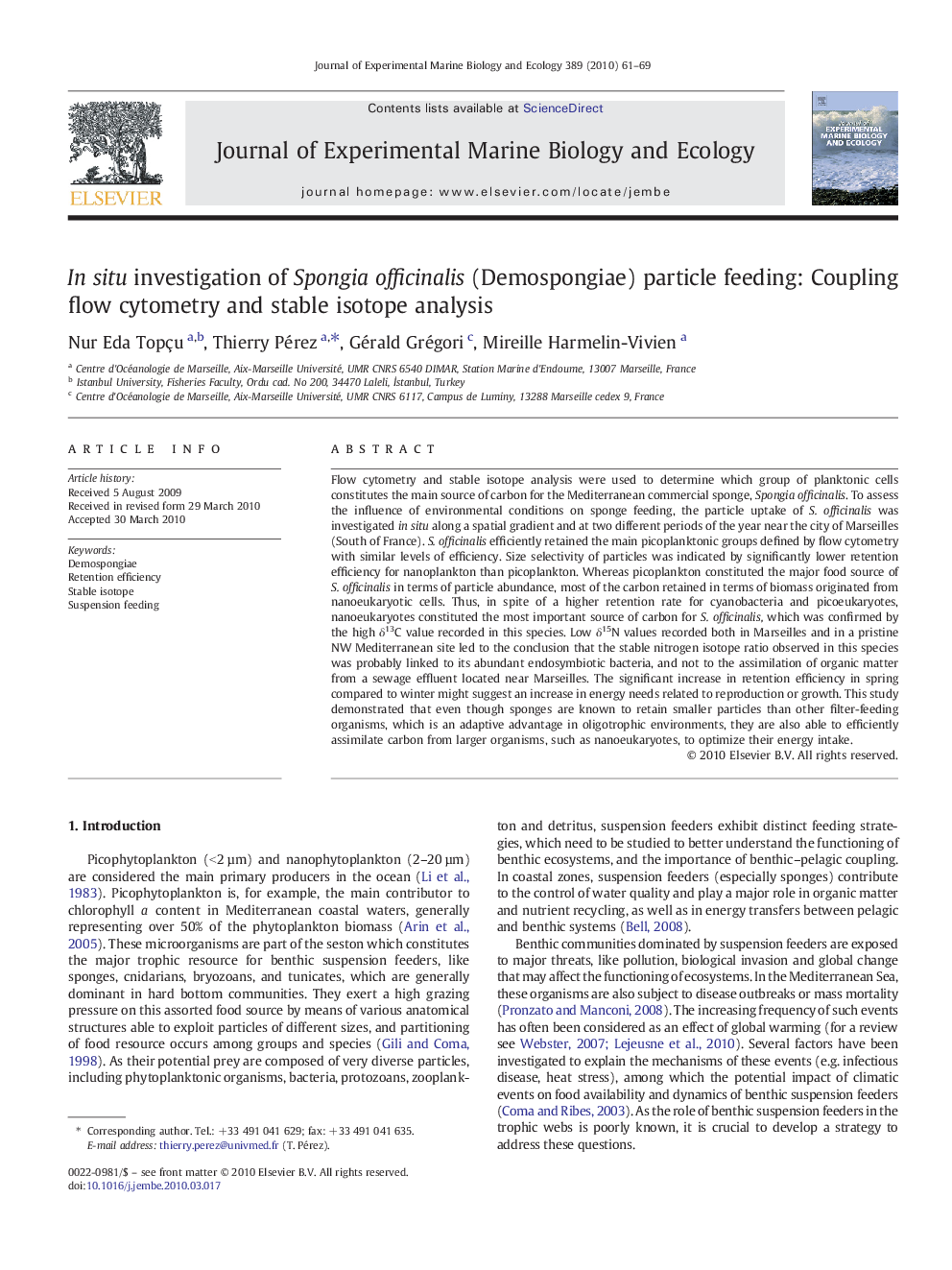| کد مقاله | کد نشریه | سال انتشار | مقاله انگلیسی | نسخه تمام متن |
|---|---|---|---|---|
| 4396661 | 1618471 | 2010 | 9 صفحه PDF | دانلود رایگان |
عنوان انگلیسی مقاله ISI
In situ investigation of Spongia officinalis (Demospongiae) particle feeding: Coupling flow cytometry and stable isotope analysis
دانلود مقاله + سفارش ترجمه
دانلود مقاله ISI انگلیسی
رایگان برای ایرانیان
کلمات کلیدی
موضوعات مرتبط
علوم زیستی و بیوفناوری
علوم کشاورزی و بیولوژیک
علوم آبزیان
پیش نمایش صفحه اول مقاله

چکیده انگلیسی
Flow cytometry and stable isotope analysis were used to determine which group of planktonic cells constitutes the main source of carbon for the Mediterranean commercial sponge, Spongia officinalis. To assess the influence of environmental conditions on sponge feeding, the particle uptake of S. officinalis was investigated in situ along a spatial gradient and at two different periods of the year near the city of Marseilles (South of France). S. officinalis efficiently retained the main picoplanktonic groups defined by flow cytometry with similar levels of efficiency. Size selectivity of particles was indicated by significantly lower retention efficiency for nanoplankton than picoplankton. Whereas picoplankton constituted the major food source of S. officinalis in terms of particle abundance, most of the carbon retained in terms of biomass originated from nanoeukaryotic cells. Thus, in spite of a higher retention rate for cyanobacteria and picoeukaryotes, nanoeukaryotes constituted the most important source of carbon for S. officinalis, which was confirmed by the high δ13C value recorded in this species. Low δ15N values recorded both in Marseilles and in a pristine NW Mediterranean site led to the conclusion that the stable nitrogen isotope ratio observed in this species was probably linked to its abundant endosymbiotic bacteria, and not to the assimilation of organic matter from a sewage effluent located near Marseilles. The significant increase in retention efficiency in spring compared to winter might suggest an increase in energy needs related to reproduction or growth. This study demonstrated that even though sponges are known to retain smaller particles than other filter-feeding organisms, which is an adaptive advantage in oligotrophic environments, they are also able to efficiently assimilate carbon from larger organisms, such as nanoeukaryotes, to optimize their energy intake.
ناشر
Database: Elsevier - ScienceDirect (ساینس دایرکت)
Journal: Journal of Experimental Marine Biology and Ecology - Volume 389, Issues 1â2, 30 June 2010, Pages 61-69
Journal: Journal of Experimental Marine Biology and Ecology - Volume 389, Issues 1â2, 30 June 2010, Pages 61-69
نویسندگان
Nur Eda Topçu, Thierry Pérez, Gérald Grégori, Mireille Harmelin-Vivien,